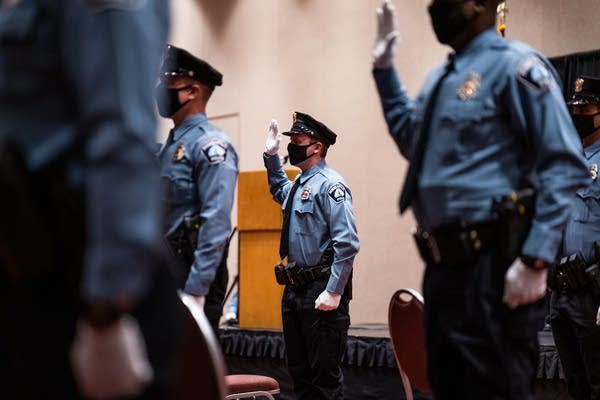Minneapolis police to get bystander training following murder of George Floyd

New police officers raise their hands to take an oath at a Minneapolis Police Academy graduation ceremony at the Minneapolis Convention Center on July 17, 2020.
Evan Frost | MPR News 2020
Go Deeper.
Create an account or log in to save stories.
Like this?
Thanks for liking this story! We have added it to a list of your favorite stories.


